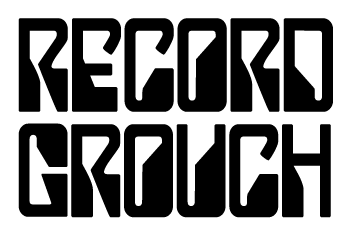 Image 1 of
Image 1 of


V/A: Sound Storing Machines, The First 78rpm Records from Japan, 1903-1912 (Sublime Frequencies)
From the one-sheet:
“The first commercial recordings from Asia were made in Japan in 1903 by Fred Gaisberg, the legendary producer and recording engineer who traveled the world making recordings for the Gramophone Company (later His Masters Voice) […] Man's ability to record and reproduce sound had only existed since 1877 (with the invention of Edison's cylinder phonograph) and flat disc records […] It is a miracle what these fragile discs have survived: wars with Russia and China, the fire bombings (and worse) of World War II, modernization, the onslaught of Western media.
They document, through a dreamlike haze of surface noise, a Japan that had just barely begun to open its doors to the rest of the world. Including gagaku, shakuhachi, shamisen, storytelling, folksong and more. these recordings are a unique glimpse into an ancient culture and an important document of the beginnings of the recording industry. Simple and complex. Alien and familiar. Featuring important artists and those who only appeared to sing before the strange Western recording horn and then vanished.
Sound Storing Machines spans only nine years of recording -- from 1903 and the first commercial recordings made by Fred Gaisberg to 1912, the beginning of Japan's homegrown record industry, including a few sides taken from Japan's notorious bootleg 78rpm industry.
Collected on various trips to Japan and compiled by sound artist Robert Millis (Indian Talking Machine, Victrola Favorites, Climax Golden Twins, Phi Ta Khon: Ghosts of Isan, This World is Unreal Like a Snake in a Rope, etc.)
This is part three in a series (all produced by Millis) of early recording from Asia -- including Sublime Frequencies' The Crying Princess: 78rpm Records from Burma and Scattered Melodies: Korean Kayagum Sanjo.”
From the one-sheet:
“The first commercial recordings from Asia were made in Japan in 1903 by Fred Gaisberg, the legendary producer and recording engineer who traveled the world making recordings for the Gramophone Company (later His Masters Voice) […] Man's ability to record and reproduce sound had only existed since 1877 (with the invention of Edison's cylinder phonograph) and flat disc records […] It is a miracle what these fragile discs have survived: wars with Russia and China, the fire bombings (and worse) of World War II, modernization, the onslaught of Western media.
They document, through a dreamlike haze of surface noise, a Japan that had just barely begun to open its doors to the rest of the world. Including gagaku, shakuhachi, shamisen, storytelling, folksong and more. these recordings are a unique glimpse into an ancient culture and an important document of the beginnings of the recording industry. Simple and complex. Alien and familiar. Featuring important artists and those who only appeared to sing before the strange Western recording horn and then vanished.
Sound Storing Machines spans only nine years of recording -- from 1903 and the first commercial recordings made by Fred Gaisberg to 1912, the beginning of Japan's homegrown record industry, including a few sides taken from Japan's notorious bootleg 78rpm industry.
Collected on various trips to Japan and compiled by sound artist Robert Millis (Indian Talking Machine, Victrola Favorites, Climax Golden Twins, Phi Ta Khon: Ghosts of Isan, This World is Unreal Like a Snake in a Rope, etc.)
This is part three in a series (all produced by Millis) of early recording from Asia -- including Sublime Frequencies' The Crying Princess: 78rpm Records from Burma and Scattered Melodies: Korean Kayagum Sanjo.”
From the one-sheet:
“The first commercial recordings from Asia were made in Japan in 1903 by Fred Gaisberg, the legendary producer and recording engineer who traveled the world making recordings for the Gramophone Company (later His Masters Voice) […] Man's ability to record and reproduce sound had only existed since 1877 (with the invention of Edison's cylinder phonograph) and flat disc records […] It is a miracle what these fragile discs have survived: wars with Russia and China, the fire bombings (and worse) of World War II, modernization, the onslaught of Western media.
They document, through a dreamlike haze of surface noise, a Japan that had just barely begun to open its doors to the rest of the world. Including gagaku, shakuhachi, shamisen, storytelling, folksong and more. these recordings are a unique glimpse into an ancient culture and an important document of the beginnings of the recording industry. Simple and complex. Alien and familiar. Featuring important artists and those who only appeared to sing before the strange Western recording horn and then vanished.
Sound Storing Machines spans only nine years of recording -- from 1903 and the first commercial recordings made by Fred Gaisberg to 1912, the beginning of Japan's homegrown record industry, including a few sides taken from Japan's notorious bootleg 78rpm industry.
Collected on various trips to Japan and compiled by sound artist Robert Millis (Indian Talking Machine, Victrola Favorites, Climax Golden Twins, Phi Ta Khon: Ghosts of Isan, This World is Unreal Like a Snake in a Rope, etc.)
This is part three in a series (all produced by Millis) of early recording from Asia -- including Sublime Frequencies' The Crying Princess: 78rpm Records from Burma and Scattered Melodies: Korean Kayagum Sanjo.”
